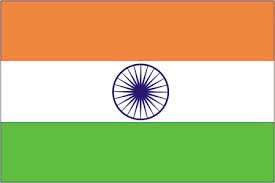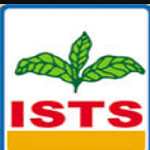In India, organized tobacco research has its origin in the mid-1930s with the establishment of the Cigarette Tobacco Research Station at Guntur under the patronage of the formerly Imperial Agricultural Research Institute, New Delhi. With the growing importance of tobacco in the national economy, the Government of India constituted the Indian Central Tobacco Committee to establish the Central Tobacco Research Institute in 1947. Subsequently, the institute was brought under the aegis of the ICAR in the year 1965. Through its long voyage of 77 years, the Institute has evolved into a tobacco research network system catering to the research needs of varied tobacco types. The institute has been commanding national tobacco research and has contributed to the growth and development of tobacco science.
The institute has recently been rechristened as ICAR-NIRCA (ICAR-National Institute for Research on Commercial Agriculture) with a broader mandate, including commercial crops such as chilli, turmeric, castor, and ashwagandha in addition to tobacco. India, being the largest producer of these crops, the export orientation of these crops on a global scale is very low, which needs to be accelerated to emerge India as the powerhouse of agri-exporter in the world.
High-value Commercial Crops:
India is the leader in chilli production (25.96 lakh tons) and has a share of 47% in the globe, but only 23% of produce (6.01 lakh tons) is exported and contributing to the foreign exchange of Rs. 12,492 Crores. Turmeric, known as golden spice, around 82% of world production (10.74 lakh tons) is grown in the country and encompasses huge diversity (around 40 to 45 species). Currently, turmeric export is 1.62 lakh tons contributing foreign exchange of Rs. 1,875 Crores, however, the processed share is only 0.49 lakh tons. In castor, India enjoys a virtual monopoly in castor production (18 lakh tons) and exports in the world. The castor oil exports (6.46 lakh tons) contribute to foreign exchange of Rs. 7805 Crores but import around 9, 000 crores of castor oil derivatives. India is the top producer of Ashwagandha, predominantly grown in Madhya Pradesh and Rajasthan. Ashwagandha from the Neemuch market exporting to international markets. In recent years, there has been tremendous growth in the export of Ashwagandha. Tobacco is an important commercial crop grown in an area of 0.425 million hectares in India. India stands second in tobacco production (7.72 lakh tons), exports around 3.15 lakh tons, and Rs. 12000 crores of foreign exchange.
Presently, these high-value crops together account for nearly Rs. 35,000 Cr. of export earnings annually. The establishment of ICAR-NIRCA can significantly benefit the diverse agricultural landscape in India. The intense focus on the market-driven research and commercialization of Indian agriculture would enhance productivity, quality, agro-processing, and value addition, product diversification in accordance with the growing demand (domestic and global) for processed and value-added products. This would lead to augmented income and profitability of commercial agriculture in the country.

 GOVERNMENT OF INDIA
GOVERNMENT OF INDIA  || MINISTRY OF AGRICULTURE AND FARMER'S WELFARE
|| MINISTRY OF AGRICULTURE AND FARMER'S WELFARE














 HRD Training Programme on
Phytochemical analysis techniques in commercial crops -
08-16 December, 2025. ( Last Date Extended To 26.11.2025 )
HRD Training Programme on
Phytochemical analysis techniques in commercial crops -
08-16 December, 2025. ( Last Date Extended To 26.11.2025 )


















